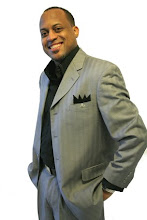 Heinz Histroy Center
Heinz Histroy CenterA recent visit to the Senator John Heinz History Center in Pittsburgh, Pennsylvania, offered a welcome look into the city’s past sports glories. A permanent exhibit features the two Negro League Baseball teams that were the nation’s very best during the 1930s and 40s. Barred from playing in the white Major Leagues, Black players competed in their own leagues with teams that featured some of the greatest baseball talents of all time.

Pittsburgh had two teams -- the Homestead Grays and the Pittsburgh Crawfords. During the half-century that sport in America was divided by race, African Americans created a baseball world of their own. With Cool Papa Bell flying around the base-paths, Josh Gibson hitting balls farther than anyone had before, and Satchel Paige striking out the side, this city became the center of black baseball in the Americas.
Pittsburgh alone had two Negro League franchises. In 1900, steelworkers in Homestead formed a club that became known as the Homestead Grays. Native son Cumberland Posey Jr. joined them as a player in 1911. Posey made them the best black club in the region and ultimately one of the greatest anywhere. In 1925, youth on the Hill (the Hill District is located just East of Downtown) formed a rival team, sponsored by the Crawford Bath House. The Crawfords battled the Grays for local supremacy. After numbers baron (illegal lottery) Gus Greenlee took them on, the Crawfords joined the Negro National League, and fielded a club that ranks among baseball’s best ever.

The Pittsburgh teams won more than a dozen Negro League Championships, with the Grays winning nine straight (1937—1945). Most of the Negro Leaguers in the Baseball Hall of Fame played for one or both of these teams.
Denied the chance to play in the white Major Leagues until 1947 (when Jackie Robinson was drafted by the Brooklyn Dodgers), these Negro Leaguers were also excluded from baseball’s Hall of Fame until 1971.
Founded in 1912, the Homestead Grays team was made up of “Old Pittsburghers,” as the migrants from the upper South and their descendants were known. Many of the Grays held skilled jobs at the Homestead Steel Works.
The team came into its own during the late 1930s. Playing in Pittsburgh and Washington D.C., they won nine Negro National League pennants in a row (1937-1945), as well as the last Negro League World Series ever played, in 1948. With Buck Leonard and Josh Gibson anchoring their feared lineup, the Grays became a black baseball dynasty.
The Crawfords team was formed in 1925. City league champs, they became known on the Hill as the “little” Homestead Grays. After Josh Gibson and several players from the Edgar Thomson Steel Works team joined them, the Crawfords rivaled the Grays.
In 1930, Gus Greenlee took on the team and signed Oscar Charleston, Satchel Paige, Cool Papa Bell, and other stars. He re-formed the Negro National League and built Greenlee Field, the first and finest black-controlled ballpark in the nation, on the Hill.
The Crawfords might have been baseball’s best
team ever, but the club fell apart after many of its players jumped to teams in the Dominican Republic in 1937.
During the late 1930s through the 1940s the Grays played their home games at Pittsburgh's Forbes Field, then home of the Pittsburgh Pirates. However, during this same period the club adopted the Washington, D.C. area as its "home away from home" and scheduled many of its "home" games at Washington's Griffith Stadium, then home park of the Washington Senators. The Grays disbanded after the 1950 season.

In 1972, Josh Gibson, catcher and power hitter, who played for both the Crawfords and Grays,
and Buck Leonard, first baseman for the Grays were both inducted to the Baseball Hall of Fame.
In 2002, the Homestead High-Level Bridge which crosses the Monongahela River at Homestead was renamed the Homestead Grays Bridge in honor of the team. On June 26, 2009, in Pittsburgh, the Pittsburgh Pirates played the Kansas City Royals in an inter league game. The Pittsburgh Pirates wore uniforms of the Homestead Grays, while the Royals wore the uniforms of the Kansas City Monarchs. The Pirates won the game, 5-3.
Satchell Paiges Glove
Plan to visit Pittsburgh and the Senator John Heinz History Center. View these websites for more information:
Senior Travel Editor


If you would like to attend a Pittsburgh Pirates game live in person, Pirates Tickets is your source. Our site provides schedules and information for Pittsburgh Pirates.
ReplyDelete